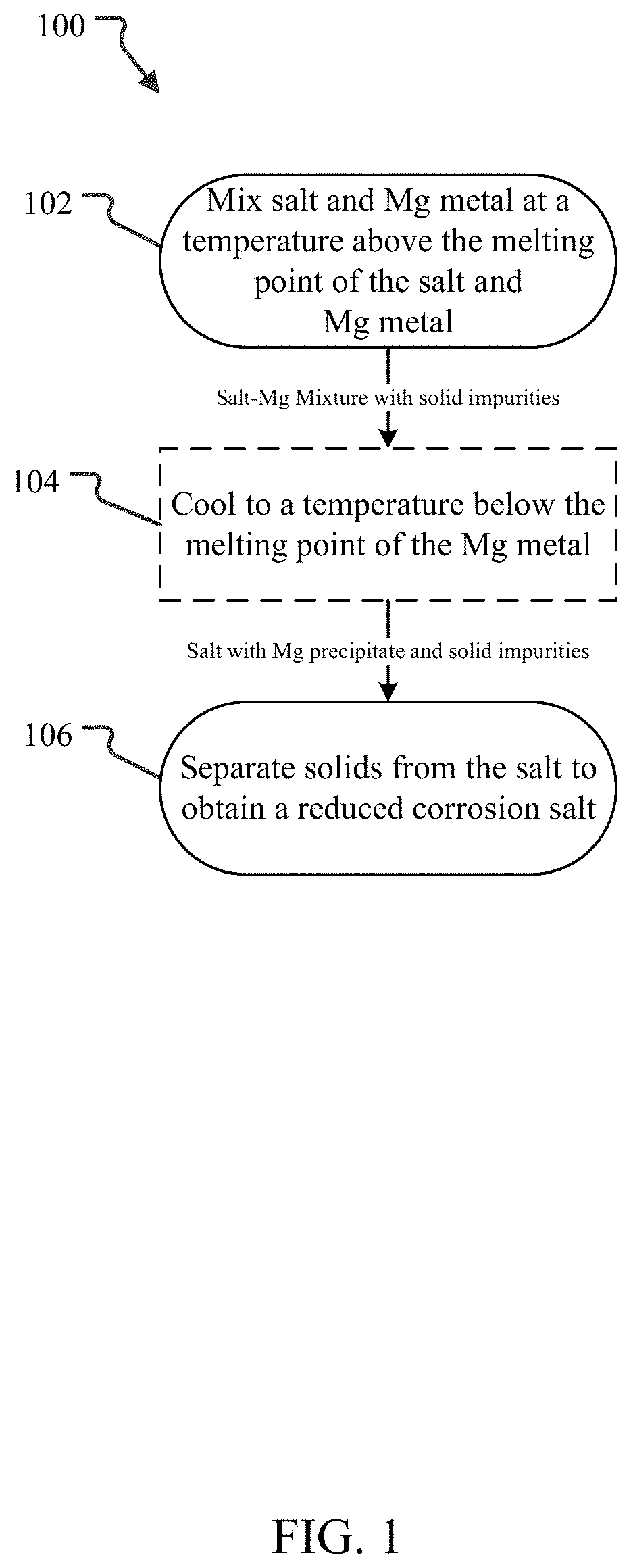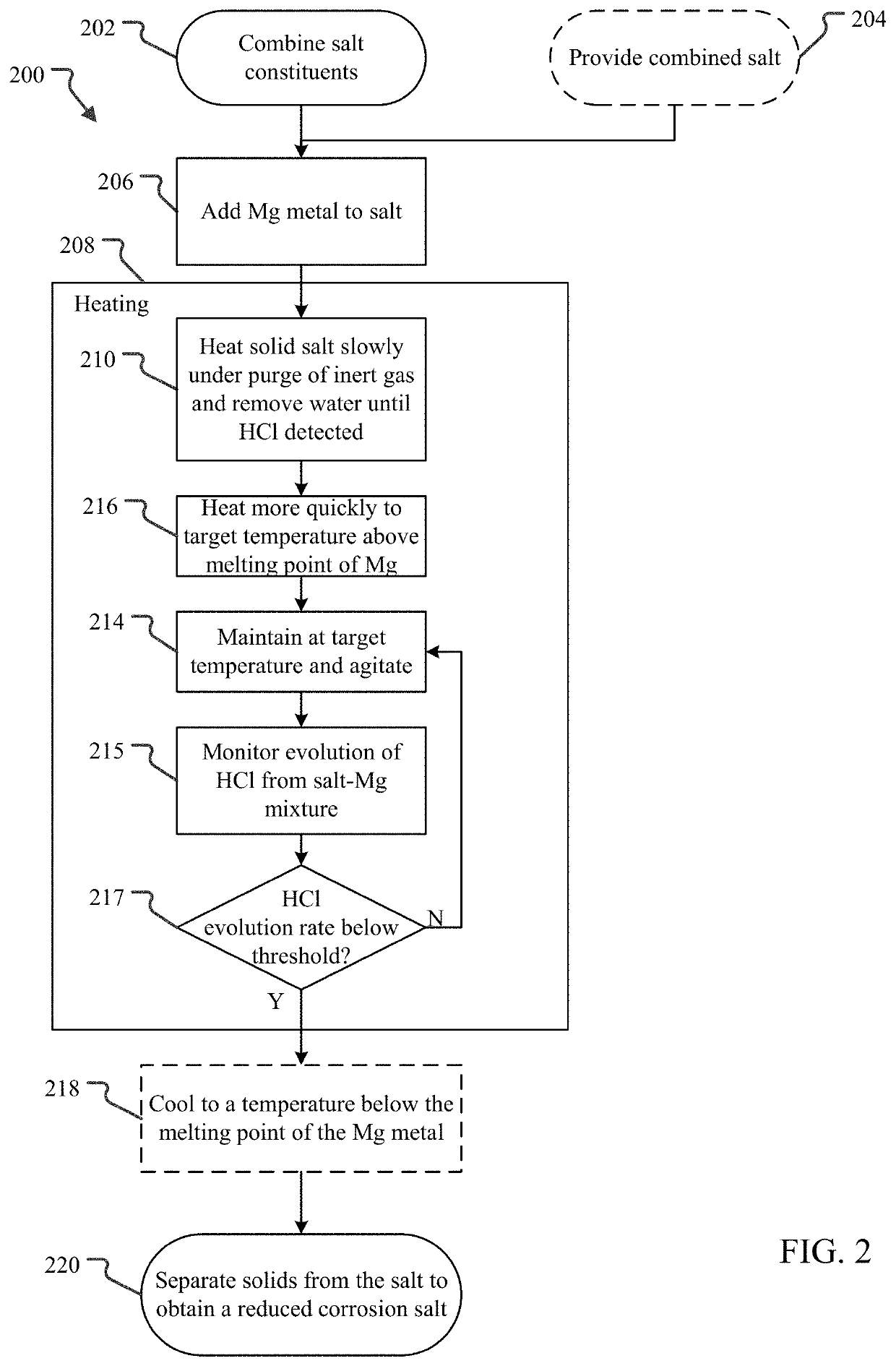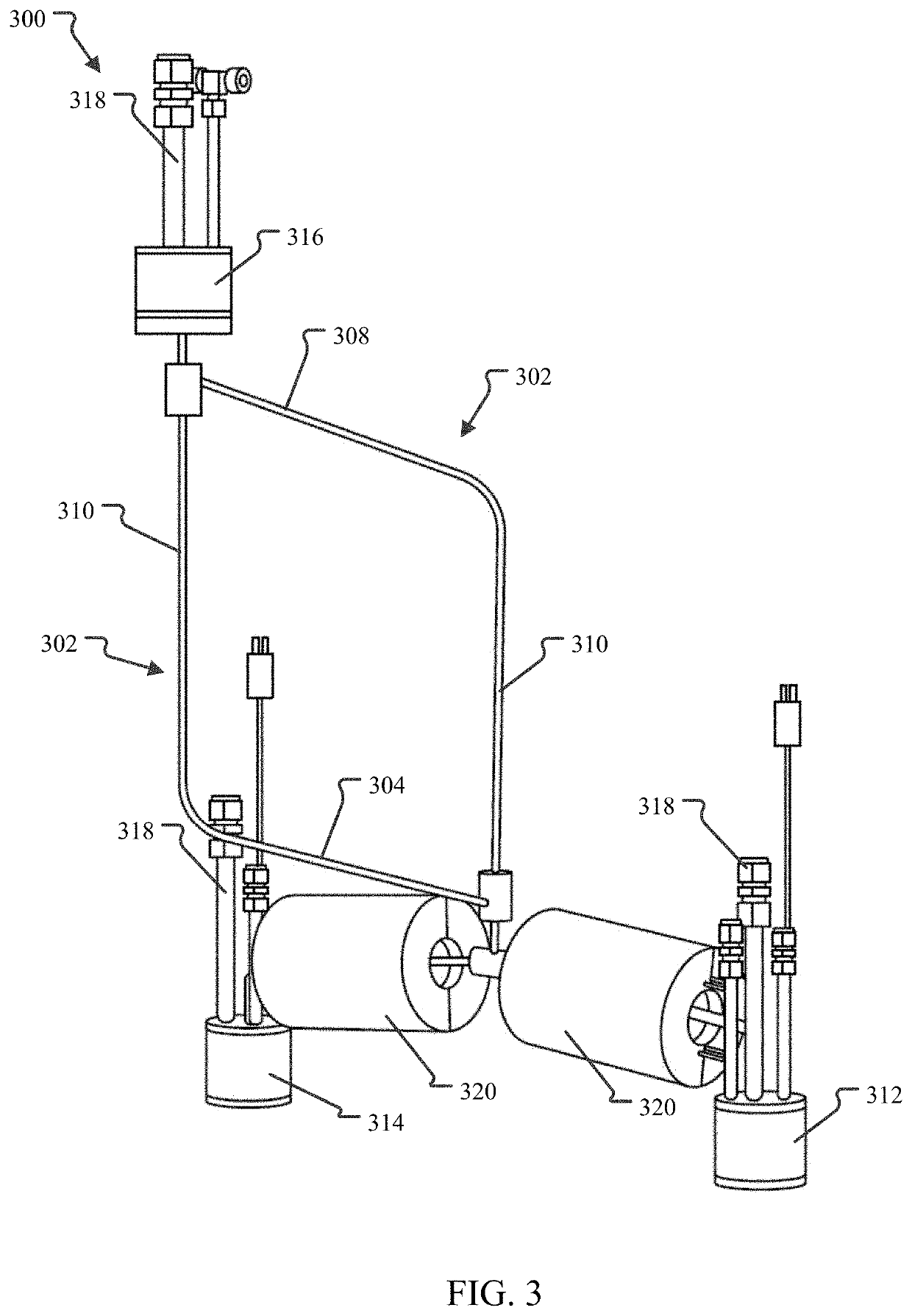Corrosion-resistant coolant salt and method for making same
a coolant salt and corrosion-resistant technology, applied in the field of corrosion-resistant coolant salt and method for making same, can solve the problems of undesirable cadmium waste stream which must be handled, molten salt coolant is often highly corrosive,
- Summary
- Abstract
- Description
- Claims
- Application Information
AI Technical Summary
Problems solved by technology
Method used
Image
Examples
example 1
[0061]Melt and filtration only, no Mg reduction. The appropriate amount of NaCl and MgCl2 was combined, melted, and transferred through a nickel line and stainless steel filter, into a storage molybdenum crucible. The transfer occurred at roughly 3-4 PSI, much higher than the expected 0.7 PSI of hydrostatic pressure. This indicated that the salt had many precipitates or that the filter had been corroded during the bake out. No Mg metal was used during this example. The resulting salt, after cooling, was concave on the top with marbling. The inside showed an array of “geode” like crystals. Color was slightly off white.
example 2
[0062]Melt and filtration only, no Mg reduction. Same as Example 1. A salt was obtained with indications of crystals, a slightly more yellow color than Example 1 NaCl—MgCl2, but contained considerable “floating debris” on the top.
example 3
[0063]High temperature melt followed by filtration, Mg metal added, but no agitation. 430 grams of 98-99% pure grade salt were loaded into a nickel purifier. The purifier was kept inside of a glove box and opened to its atmosphere. Salt was heated at 550° C. for roughly 24 hours while in contact with 43 mg of magnesium turnings. The salt was not agitated with gas. As described above, the Mg turnings were placed on top of the salt and observed to puddle and melt. Otherwise, there was no agitation. The glove box dewpoint increased to 11 ppm but had returned to 4 ppm by the end of the heating period, indicating that most water had boiled off by that time. While the salt was pouring it was translucent, but had an undeniable purple color. There was no evidence of “cloudiness”.
PUM
| Property | Measurement | Unit |
|---|---|---|
| melting temperature | aaaaa | aaaaa |
| melting temperature | aaaaa | aaaaa |
| melting point | aaaaa | aaaaa |
Abstract
Description
Claims
Application Information
 Login to view more
Login to view more - R&D Engineer
- R&D Manager
- IP Professional
- Industry Leading Data Capabilities
- Powerful AI technology
- Patent DNA Extraction
Browse by: Latest US Patents, China's latest patents, Technical Efficacy Thesaurus, Application Domain, Technology Topic.
© 2024 PatSnap. All rights reserved.Legal|Privacy policy|Modern Slavery Act Transparency Statement|Sitemap



